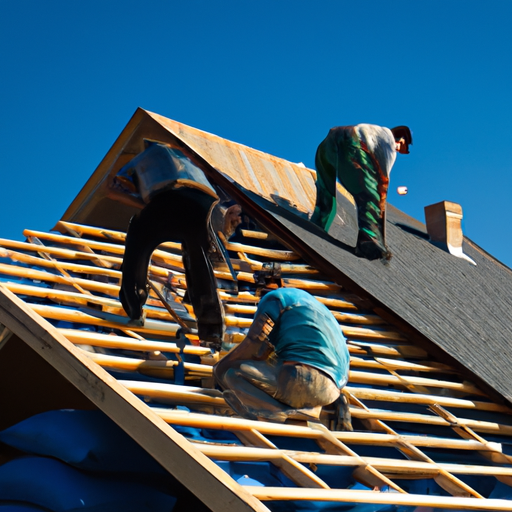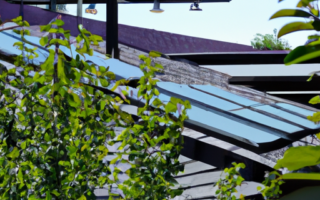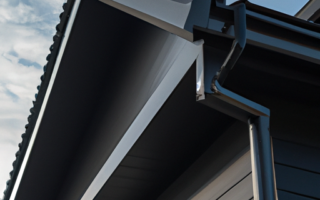Introduction to Roof Construction: A Comprehensive Guide to Key Components and Processes
Introduction to Roof Construction: A Comprehensive Guide to Key Components and Processes
Roof construction is a crucial aspect of building design and plays a significant role in protecting our homes and commercial properties from the elements. Understanding the key components and processes involved in roof construction is essential for any homeowner, builder, or construction professional. In this comprehensive guide, we will delve into the basics of roof construction, providing you with a clear understanding of the fundamental elements and steps involved.
One of the primary components of roof construction is the roof covering, which serves as the outermost layer of the roof. The choice of roof covering material can vary depending on factors such as climate, aesthetic preferences, and budget. Common roof covering materials include asphalt shingles, metal sheets, clay or concrete tiles, and slate. Each material has its own advantages and considerations, and proper installation is critical for long-lasting performance.
Underneath the roof covering, we have the roof deck, which provides the structural support for the entire roof system. The roof deck is typically made of wood or oriented strand board (OSB) and should be strong enough to withstand the weight of the covering materials, as well as any potential loads such as snow or maintenance personnel.
To ensure proper insulation and ventilation, roof construction also includes the installation of insulation and a ventilation system. Insulation helps to regulate the temperature inside the building and reduce energy consumption, while ventilation allows for air circulation and prevents moisture buildup, which could lead to mold and other issues. Adequate insulation and ventilation are vital for maintaining a comfortable and healthy indoor environment.
Another critical component in roof construction is the flashing, which is used to prevent water penetration at vulnerable areas such as valleys, chimneys, skylights, and vents. Flashing is typically made of metal and is installed in a way that directs water away from these areas, ensuring the integrity of the roof system and preventing leaks.
Lastly, we have the structural elements of the roof, including trusses or rafters, which provide the framework for the roof. These components distribute the weight of the roof evenly and help to support the roof’s load. Proper design and construction of the structural elements are crucial for maintaining the stability and durability of the roof.
In conclusion, understanding the key components and processes involved in roof construction is essential for anyone involved in the building industry. From the roof covering to the roof deck, insulation, ventilation, flashing, and structural elements, each component plays a vital role in creating a well-constructed and effective roof. By gaining knowledge of these elements, homeowners and professionals can make informed decisions and ensure the longevity and performance of their roofs.
Understanding Roof Trusses: The Backbone of Roof Construction
Understanding Roof Trusses: The Backbone of Roof Construction
When it comes to roof construction, one of the key components that plays a crucial role in providing structural support is the roof truss. Roof trusses are essentially the backbone of the entire roof system, distributing the weight of the roof evenly to the walls and foundation. In this article, we will delve into the basics of roof trusses and explain their importance in the overall construction process.
A roof truss is a framework made up of triangular-shaped beams that are interconnected to form a rigid structure. These trusses are typically fabricated from wood or steel, and their design is carefully engineered to withstand the loads imposed on the roof, such as the weight of the materials, snow, wind, and other external forces.
The main advantage of using roof trusses is their ability to span large distances without the need for additional supporting walls or columns. This provides more open and flexible floor plans, allowing for better utilization of the space beneath the roof. Additionally, trusses can be prefabricated offsite and then easily installed on the construction site, saving both time and labor during the construction process.
Roof trusses consist of several key components that work together to maintain the structural integrity of the roof. These components include:
– Top and bottom chords: These are the main horizontal members of the truss that provide support and resistance against bending forces. The top chord is typically placed along the top edge of the truss, while the bottom chord runs along the bottom edge.
– Web members: These are the diagonal members that connect the top and bottom chords, forming the triangular shape. The web members help to distribute the weight evenly across the truss and prevent it from sagging.
– Gussets: These are metal plates or wooden blocks that are used to connect the different members of the truss, ensuring their stability and strength. Gussets are typically secured using nails or screws.
During the roof construction process, roof trusses are carefully positioned and secured to the walls of the structure. They are then braced to ensure stability and resistance against lateral forces, such as wind. Once the trusses are in place, roofing materials, such as shingles or metal sheets, are installed over them to provide protection against the elements.
In conclusion, roof trusses play a vital role in the construction of any roof, providing the necessary support and stability to withstand various loads and external forces. The design and installation of roof trusses require careful consideration and engineering expertise to ensure the overall integrity and safety of the structure. By understanding the basics of roof trusses, homeowners and construction professionals can make informed decisions and collaborate effectively during the roof construction process.
Key Elements of Roofing Materials: From Shingles to Metal Sheets
When it comes to roof construction, understanding the key elements of roofing materials is essential. From traditional asphalt shingles to durable metal sheets, the right choice of materials can significantly impact the longevity and performance of your roof. In this article, we will explore the different types of roofing materials commonly used in construction.
1. Asphalt Shingles
Asphalt shingles are the most popular choice for residential roofs due to their affordability and versatility. Made from a combination of asphalt, fiberglass, and mineral granules, these shingles come in a range of styles and colors. They are relatively easy to install and provide good protection against weather elements.
2. Wood Shakes
Wood shakes add a natural and rustic look to a roof. Usually made from cedar, redwood, or pine, these materials have excellent insulation properties and provide a unique aesthetic appeal. However, they require regular maintenance to prevent rot and can be more susceptible to fire hazards compared to other materials.
3. Clay or Concrete Tiles
Clay or concrete tiles are a durable and long-lasting option for roofing. They are resistant to fire, rot, and insect damage. Their distinctive appearance adds a touch of elegance to any structure. However, the weight of these tiles requires a sturdy roof structure, and professional installation is crucial to ensure proper water drainage and prevent cracking.
4. Metal Sheets
Metal roofing materials, including steel, aluminum, and copper, are gaining popularity due to their durability and low maintenance requirements. Metal sheets are lightweight, fire-resistant, and provide excellent protection against harsh weather conditions. They are available in various styles, including standing seam, corrugated panels, and metal shingles, offering versatility in design.
5. Slate
Slate is a natural stone that offers unmatched beauty and longevity. It is fire-resistant, waterproof, and resistant to mold and fungus. The unique texture and color variations of slate make it a sought-after choice for high-end residential and commercial buildings. However, the weight of slate requires a robust roof structure, and its installation can be complex and expensive.
6. Synthetic Materials
In recent years, synthetic roofing materials have emerged as an alternative to traditional options. These materials, such as rubber, plastic polymers, or composite blends, mimic the look of natural materials while offering increased durability and lower maintenance requirements. Synthetic materials are lightweight, easy to install, and often more cost-effective.
Choosing the right roofing material for your construction project depends on various factors, including budget, climate, architectural style, and personal preferences. Consulting with a professional contractor can help you make an informed decision and ensure a roof that is both functional and aesthetically pleasing.
The Importance of Proper Installation and Maintenance for a Long-lasting Roof
When it comes to the construction of a roof, one of the most critical aspects is the proper installation and regular maintenance. A roof is not just a layer of protection against the elements; it plays a crucial role in maintaining the overall structural integrity of a building. A poorly installed or neglected roof can lead to costly repairs, structural damage, and even compromise the safety of the occupants.
Proper installation is essential to ensure that the roof performs efficiently and withstands various weather conditions. It starts with selecting the right materials that are suited for the specific climate and building design. The installation process involves a series of steps, including laying down the roofing felt, applying the shingles or other desired roofing materials, and properly sealing all the joints and edges. Each of these steps requires careful attention to detail and adherence to industry best practices.
Regular maintenance is equally important for a long-lasting roof. Over time, roofs are exposed to harsh weather conditions, UV rays, and other external factors that can cause wear and tear. It is crucial to conduct routine inspections to identify any signs of damage or deterioration, such as cracked shingles, loose flashing, or leaks. Additionally, keeping the roof clean from debris, such as leaves and branches, helps prevent the buildup of moisture and the growth of mold and moss.
By investing in proper installation and regular maintenance, the lifespan of a roof can be significantly extended. A well-maintained roof can last for several decades, whereas a neglected one may require expensive repairs or even an early replacement. Not only does this save homeowners money in the long run, but it also provides them with peace of mind, knowing that their property is protected.
Furthermore, a well-maintained roof enhances the overall aesthetic appeal of a building. Whether it is a residential or commercial property, a clean and visually appealing roof adds value and curb appeal. This is especially important for those who plan to sell their property in the future. A well-maintained roof is a desirable feature that can attract potential buyers and increase the selling price.
To ensure proper installation and maintenance, it is crucial to hire a professional roofing contractor with experience and expertise in the field. They can provide valuable insights and guidance throughout the process, ensuring that the roof is installed correctly and maintained to the highest standards.
In conclusion, proper installation and regular maintenance are vital for a long-lasting roof. They not only ensure the structural integrity of a building but also save homeowners from costly repairs and enhance the overall value of the property. By investing in quality installation and routine maintenance, homeowners can enjoy a durable and aesthetically pleasing roof that provides protection and peace of mind for years to come.



